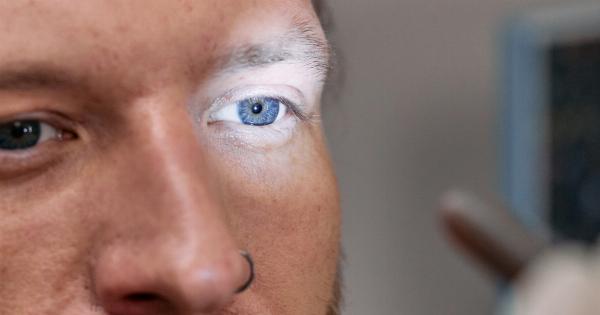Eye color is one of the most distinct physical characteristics of the human body. It is the first feature that people notice when they first meet someone.
However, the color of our eyes is not just determined by our genes alone but there are several other factors that can influence it. Here are 7 surprising factors that affect eye color:.
1. Age
One of the most surprising factors is our age. Babies are usually born with blue or gray eyes, which can change over time. It usually takes about six months for a baby’s final eye color to be determined.
Eye color may also change during puberty, and in some cases up until the age of 25. The aging process can also cause changes in eye color. Eyes may become lighter or darker and may develop yellowish or whitish spots in the iris.
2. Sunlight
The amount of sunlight that we get on our eyes can also affect its color. Sun exposure can cause a temporary change in the color of the iris. This usually happens when the eyes are exposed to sunlight for a prolonged period of time.
This change is caused by a protective mechanism of the body which produces more melanin to protect the eyes from UV rays. This can make the eyes appear darker temporarily.
3. Diseases/Health conditions
There are certain diseases and health conditions that can affect the color of our eyes. For instance, people who have albinism often have very light-colored eyes because they have less pigment in their iris.
Additionally, some eye conditions such as glaucoma, Horner’s syndrome, and Fuch’s heterochromic iridocyclitis can also affect eye color. These conditions can cause the iris to become more or less pigmented, resulting in a change in the color of the eyes.
4. Medications
Some medications can also cause a change in eye color. For instance, medication prescribed for glaucoma treatment such as prostaglandin analogues, can darken eye color and increase the amount of pigment in the iris. This change is usually permanent.
Similarly, a drug called latanoprost used in the treatment of glaucoma can cause light-colored eyes to turn darker. On the other hand, some medications such as certain antibiotics and chemotherapy drugs can also cause a temporary change in eye color.
5. Emotions
Believe it or not, emotions can also have an effect on eye color. Our iris is surrounded by tiny muscles that control its size. When we experience different emotions, these muscles can expand or contract causing the size of the pupil to change.
For instance, when we are excited, our pupils tend to dilate, which can make our eyes appear darker. On the other hand, when we are sad or scared, our pupils tend to constrict, making our eyes appear lighter.
6. Environment
Environmental factors such as climate, pollution, and even the food we eat can also affect eye color. For instance, people who live in tropical climates tend to have darker eyes, while those who live in cold climates tend to have lighter eyes.
Pollution can also cause a change in eye color by affecting the amount of melanin produced by the body. And eating foods rich in certain nutrients such as Vitamin A, C, and E can help maintain healthy eyes, while deficiencies in these nutrients can lead to a change in eye color or damage to the eyes.
7. Genetics
Lastly, genetics plays a major role in determining eye color. The color of our eyes is determined by the amount and type of pigments in the iris, which is inherited from our parents.
There are two types of pigments that determine eye color: melanin, which is responsible for brown and black-colored eyes, and lipochrome, which is responsible for blue and green-colored eyes. However, the expression of these genes can vary, which can result in different shades of eye color within families.
Conclusion
In conclusion, there are several factors that can affect the color of our eyes, from our age, environment, health conditions, medications we take, emotions, to our genes.
Understanding these factors can help us appreciate the unique beauty of our eyes and appreciate the different shades of eye color we encounter in others.






















